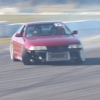R&r.regarding Std Ecu. What Does It Mean Exacly
Announcements
-
Similar Content
-
Latest Posts
-
By Dose Pipe Sutututu · Posted
Fuark, at least the motor survived. What brand was the fitting that snapped? -
Wrong question. There's no point in spending the rather large sum of cash and effort to add turbo, without taking it to the "sensible" limit of the motor itself. If you have to upgrade injectors, etc, then so be it. That is a tiny fraction of what it will cost you to turbo it.
-
Measure voltage at the starter solenoid terminal when the key is at start and it has clicked. If it is really low, then the suspicion falls on the ignition switch (contacts or wiring thereof) as causing a voltage drop instead of sending enough volts to throw the solenoid all the way to engage the starter itself. If it is a decent voltage, then the suspicion is on the solenoid. Might have s horted coil, or might hva dirty contacts. Rip the starter off, dismantle, clean up contacts and inspect winding. It might not be possible to see if there is a short in the winding though. I have a spare starter here that I could measure the resistance of the coil, as a guide to about what it should be, if you need a comparison. <parts hoarder>No you cannot have it.</parts hoarder>
-
Absolutely matters because, while a temperature change will eventually reach a sensor at the end of a static line, the response time is far far far too slow to be useful. Might as well not have a temp gauge at all.
-





Recommended Posts
Create an account or sign in to comment
You need to be a member in order to leave a comment
Create an account
Sign up for a new account in our community. It's easy!
Register a new accountSign in
Already have an account? Sign in here.
Sign In Now